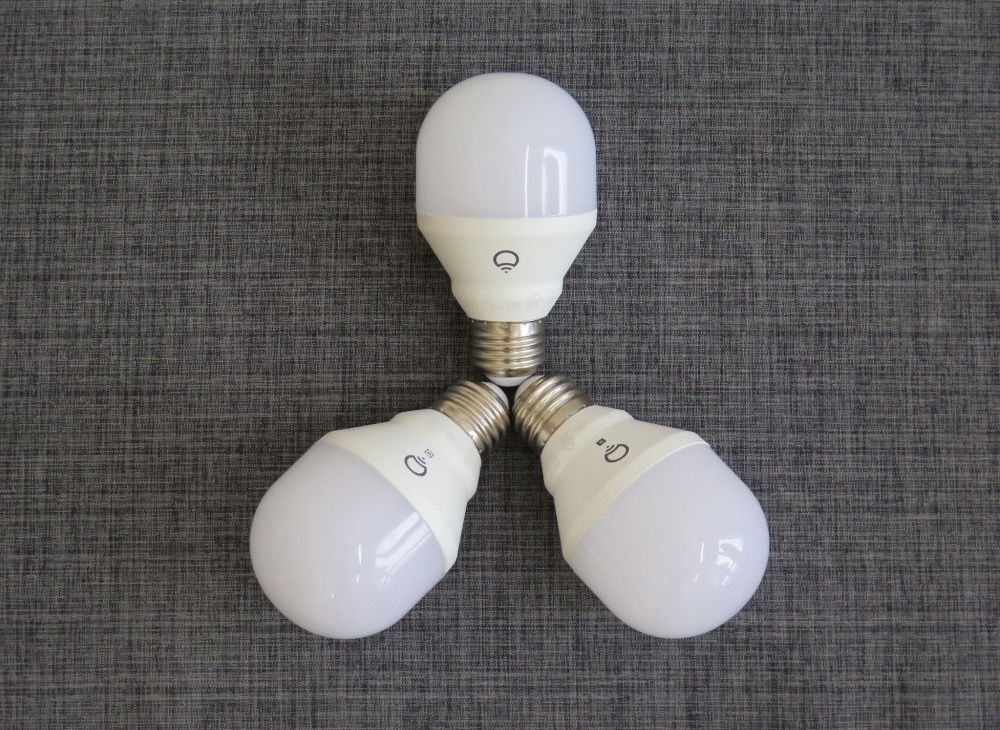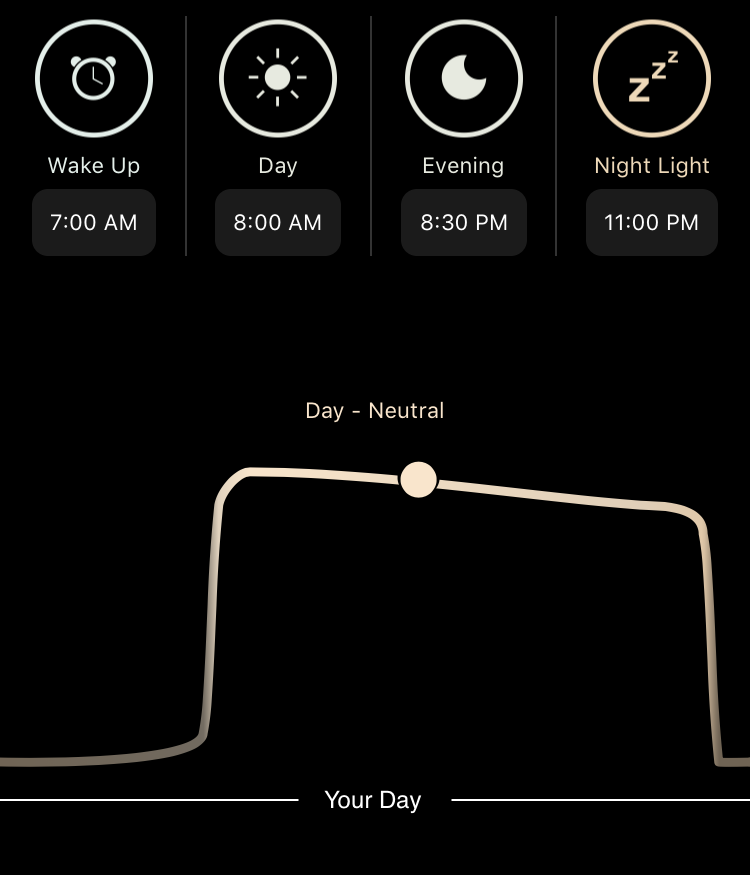LIFX makes some of the best smart bulbs when it comes to specs, with their high lumen count, great color accuracy, and with their LIFX+ series, even infrared capability. The LIFX bulbs are some of the best on the market, but with their price point being higher than the standard smart bulb, it was more reserved for the high-end market.
That changed when LIFX announced that their bulbs would be integrated into the HomeKit system as well as an entire new lineup of smart bulbs, called LIFX Mini. In terms of packaging, there isn’t much too it. It’s very compact, much like the light itself, leaving very little waste. On the side there are lighting facts stylized as nutrition facts, stating the brightness of the bulbs, estimated energy cost, and life expectancy. When you pop open the lid and pull the bulb out, the design is quite striking. The LIFX Mini has a wide beam angle of 250 degrees, resulting in an unique design unlike any other smart bulb.
Rather than connecting a hub to your router and then connecting the bulbs to the hub, the LIFX Mini bulbs have Wi-Fi built in, which eliminates the need for a hub. Within minutes you can easily have your LIFX Mini bulbs setup and ready to use. There are three different bulbs in the LIFX Mini lineup. There’s the LIFX Mini Color, which offers over 16 million colors to choose from. The LIFX Mini Day & Dusk allows you to adjust the white temperature, from 1500K to 4000K. And the LIFX Mini White simply allows you to adjust the brightness with the temperature fixed at 2700K. The app does a very nice job of allowing you to finely control your bulbs. There is a color wheel that you can spin to select your desired color, and then a slider where you can adjust the saturation. A dial in the middle allows you to adjust the brightness. It works really well, and I found it to be more intuitive compared to the Philips Hue app.
That’s just one of the ways to control your LIFX bulbs. With the LIFX Color, there is a create tab, which allows you to select from a selection of different color themes, as well as save your favorite colors. Unfortunately, you cannot create your own theme. You can save colors you like, but you cannot assign different colors for different bulbs and save them as a theme. The next tab is the Effects tab. This allows you to select from a variety of effects, from simple color cycles to more complex effects, such as a Music Visualizer. Many of these effects you could gain with Philips Hue via third-party applications, but it’s nice to see some effects built right into the native app, even if some appear as gimmicky. For example, the “Spooky” effect will cause the light “to flicker then switch off before transitioning to a red color.” It might be helpful for someone, but it has very limited widespread appeal.
The Day & Dusk feature allows you to gradually change the temperature of the light throughout the course of the day, starting with a stimulating blue light in the morning, and ending with a relaxing warm yellow. I love the idea of this feature as the temperature of a light can have a big impact on your energy and emotion. Unfortunately, I turned the feature off, as the lights would turn on at the specified times to change color even if they were off before. If it did it automatically in the background without turning on the light, then I’d be more than happy to enable it.
Along with working with the native app, LIFX Mini bulbs work with Apple HomeKit, Amazon Alexa, Google Assistant, Microsoft Cortana, IFTTT, Stringify, Logitech Harmony, and more. This enables you to control you bulbs with just your voice, as well as creating automations that’ll let the LIFX Mini bulbs work together with other smart home products you own. Some other nice touches I found using the LIFX Mini bulbs was that they remembered their color and brightness even if the power was disconnected, which is perfect for when the power returns during a power outage in the middle of the night. The lights also fade nicely when they are turned on from a switch.
So, if you want to buy a smart bulb, which one should you buy? If you’re a big Apple HomeKit user, I did notice that the Philips Hue Bulbs were more reliable than the LIFX Mini bulbs. Every once in a while, the LIFX Mini bulbs will be momentarily unresponsive through the Home app. This could very be due to the fact that LIFX has only supported HomeKit as of last year. Philips Hue has supported HomeKit for many years, so some of the bugs I encountered could be fixed via software updates. Also, while it is possible to adjust the color temperature of the Philips Hue White & Ambiance bulb through the HomeKit app, it is currently not possible to do that with the LIFX Mini Day & Dusk Bulb. I also found that there were more third-party apps that worked with Philips Hue compared to LIFX. However, I found the colors to be brighter on the LIFX Mini Color compared to the Philips Hue White and Colour Ambiance 3rd Generation bulb. And of course we can’t forget that LIFX Mini bulbs don’t require a hub, while the Philips Hue Bridge, which is required to use the Philips Hue bulbs, costs $60.
So, which should you buy? LIFX Mini or Philips Hue? My recommendation would be Philips Hue if you plan to deck out your entire home, simply because of the wide product range that Philips Hue has, including their bulbs, lamps, and accessories. However, if you’re looking just to buy a bulb or two, or if you already own LIFX bulbs, then you’ll love the LIFX Mini. You can get any LIFX Mini bulb cheaper than a Philips Hue Bridge, with the LIFX Color selling at $45, the Day & Dusk selling at $30, and the White for $25. You can buy them from LIFX’s official website, or from Amazon.
What do you think of the LIFX Mini bulbs? Would you prefer them over the standard LIFX bulbs, or Philips Hue? What HomeKit accessories do you own? Let us know in the comments down below!
















